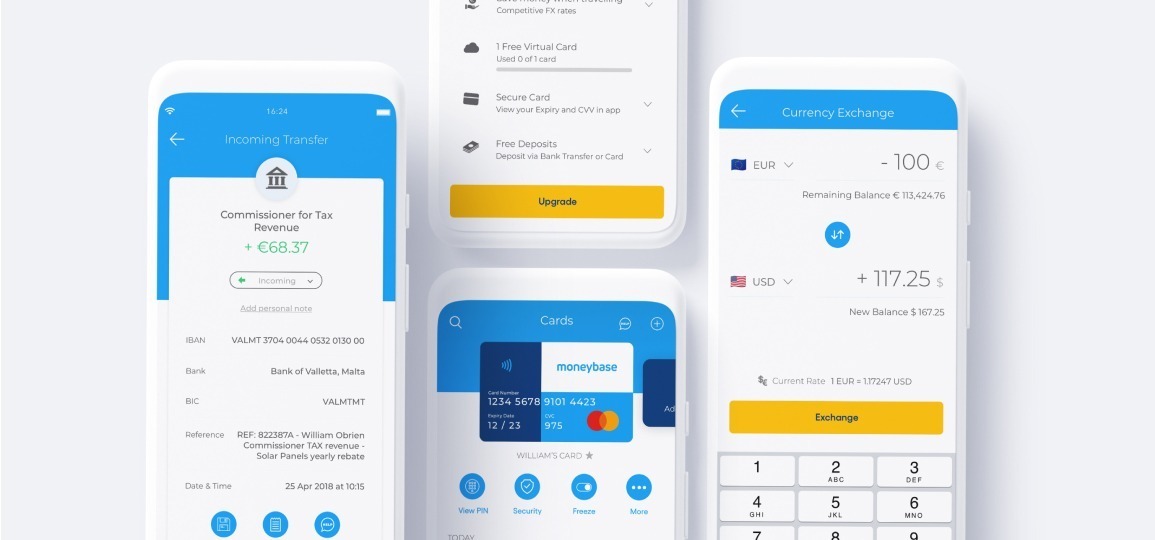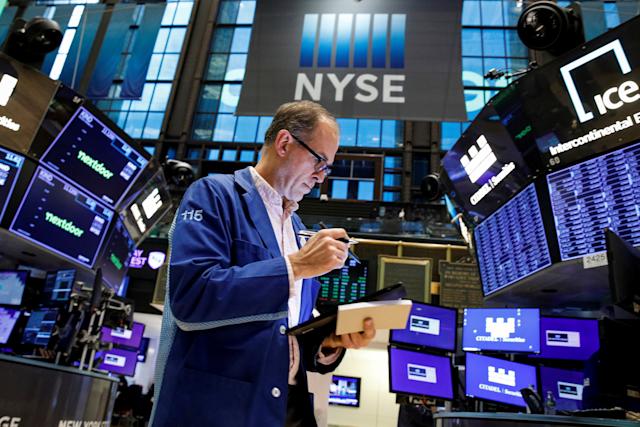A quick glance at the financial news section will display reports about one company or other that is set to undergo an initial public offering (IPO) and transform itself from a previously privately-held company into a public one and float its stock on an exchange. A term that has been a buzzword among investors for decades, the Dutch are credited with being the first to conduct a modern IPO by offering shares of the Dutch East India Company to the general public. Since then, IPOs have multiplied, going through various uptrends and downtrends in issuance ever since.
Often accompanied by much media hype, as start-ups and well-established companies in need of capital rush to list themselves on the stock market, you may be tempted to invest in one of these IPOs. Offering unique opportunities and risks, here you’ll find everything there is to know about them.
What is an IPO?
An initial public offering or IPO as it is more commonly referred to, is the first time a company offers its share of stock to the general public to both institutional and retail investors. A lengthy process whereby the IPO is typically underwritten by one or more investment banks, who also arrange for the shares to be listed on a stock exchange, such as the Nasdaq, the New York Stock Exchange (NYSE), the London Stock Exchange (LSE) or others, through this so-called float, a privately-held company becomes a public one. The underwriters provide several services, including assessing the value of the shares and coming up with the share price, as well as establishing a public market for shares, known as the initial sale. Following the IPO, shares are traded freely in the open market.
Why do companies list their stocks?
Any privately held company can go public and for many, doing so is a good way to raise money, which can be used to grow their business, for research and development, marketing purposes or to pay off debt. Going public also makes shares more liquid, which means that it is far easier for early shareholders such as founders to turn their shares into cash.
Other reasons why a company may pursue an IPO include:
- To avoid other avenues for raising capital, such as via venture capitalists, private investors or bank loans which may be too expensive.
- Going public offers a company instant publicity.
- The standing that often comes with being a public company can also help a company secure better terms with lenders.
And while the management of a private company has more control over its operations, raising funds from investors is difficult. In contrast, an IPO has the potential to raise billions of dollars or euros, yet, publicly traded companies have to deal with increased regulation, while they have to disclose a lot of information. They must file quarterly and annual financial reports, they must report on things like insider trading by senior executives and any other moves they may be considering to undertake like acquisitions.
Fun fact:
2020 was a record year for IPOs thanks to a significant rise in the number of special purpose acquisition companies, also known as SPACs who went public. Last year, there were 407 IPOs in the United States alone, twice as many as in 2019. By contrast, after the recession following the 2008 financial crisis, IPOs came to a grounding halt and for some years after that, news listings were rare.

How does an IPO work?
A company that is about to go public must disclose specific information in the registration statement. In the U.S. this statement is known as a Form S-1 and it is filed with the Securities and Exchange Commission (SEC), which oversees public companies. Much of this form contains the prospectus and other important information. The underwriters mentioned above assist the company during the IPO process by performing due diligence on the company to verify its financial information, as well as to analyse its business model, while they commit sums of money to purchase shares before they’re listed on the public exchange.
After an initial block of shares is sold, the IPO price is set, together with a date for the stock to begin trading.
What is an IPO price?
The IPO price is the price that the underwriter and company will set for the stock to begin trading at on the market. At times, this can be different to the target price that was given in the prospectus for the IPO. Before setting the IPO price, an underwriter must consider a number of factors that can influence it like the company’s current value and the investment’s risk overview. The underwriter must also balance the price in a way that is high enough to raise sufficient capital for the company, but low enough to attract investor interest.
What happens on the IPO launch?
On the day of the IPO, investors who have subscribed or registered their interest will receive their allotment before the market opens in what is known as the primary market. This takes place between the company and investors through the underwriter, a process that is usually open to institutional investors only. Once this allotment takes place, the investors become shareholders. Then, once the stock market opens, these investors can sell their stock to other market participants either at a higher or at a lower price, in the secondary market.
Initially, shares begin trading in public markets at the final IPO price, then according to investor demand.
Are IPO stocks good investments?
When Facebook (FB) debuted on the Nasdaq in 2012, its stock was trading at $38 a share. On June 25, 2021, the stock was trading at $343.18. Similarly, in 2010 Tesla (TSLA) priced its IPO at a split-adjusted $3.40 per share. The stock price in 2020 following a stock split was as high as $900 per share, representing a value increase of nearly 30,000%. Another example of an IPO triumph is Visa (V). Visa floated its IPO in 2008 when the recession was in full swing. Yet, the company managed to raise $17.9 billion, trading at the close of its first day on the market at $44. The following day, the closing price had risen to $66, a 500% jump during turbulent times.
IPO stocks can be great investments and can generate huge returns when the IPO succeeds.

What are the disadvantages of investing in an IPO?
IPOs are considered speculative:
IPO stocks can be riskier than blue-chip stocks or stocks with substantial histories of strong performance and this is why you should always read the prospectus.
The stock price can fluctuate:
Prices of newly issued stocks tend to fluctuate substantially on opening day and the days following the IPO, as the demand for new stock is initially unclear. Also, in the days following an IPO, the underwriters can protect the stock price from falling too much, while they may even buy shares of a newly-listed company themselves. But once this support ends, the stock price can fall below the offering price.
How to invest in an IPO?
An IPO is essentially an opportunity for retail investors to own and participate in the growth of a previously private company. As mentioned earlier on, there are two ways of participating in an IPO. The first is if you happen to be a client of the underwriters involved in the IPO, you may have the opportunity to directly participate in it by purchasing the shares at the offering price. Often, underwriters distribute most of the shares to their institutional and high net-worth clients. Another way and the most common one, is to purchase the shares when they are resold in the public market.
Having said that, IPOs come with a range of unique risks, so make sure you follow these tips below before investing:
Look into objective research
Being well informed before investing in an IPO is critical, which makes it all the more important to read as much as possible on the company. Going through the information on its website though is not enough. Ideally, verify anything you read against independent sources. At the same time, search online for information on its financing, any past press releases and the overall health of the industry it operates.
It’s also important to look into the underwriters involved. Generally speaking, well-known brokerages are more likely to be associated with quality companies. For instance, a big entity like the likes of Goldman Sach’s (GS), can afford to be pickier than say a small and relatively unknown underwriter who may be willing to underwrite just any company.
Dig deeper into the prospectus
The prospectus outlines the company’s risks and opportunities, financial performance, as well as an outline of the proposed uses for the money raised during the IPO. Make sure you go through it thoroughly.
Keep in mind that if the company’s revenue is growing annually by a healthy rate, then this is a good indication that the company is doing well. But be cautious if a company’s performance is lower than that of the industry as this may be a reflection that the firm is an underperformer. Also, be wary of overly optimistic future earnings outlook. Companies vying for marketplace success are often known of over-promising and then under-delivering, so tread projected accounting figures carefully.
Consider waiting for the lock-up period to end
The lockup period is a legally binding contract between the underwriters and company insiders that typically lasts between three and 24 months and prohibits investors from selling any shares of stock for a specific period. If you truly want to err on the side of caution, keep tabs on what’s happening after the lock-up period. If insiders are still holding on to their stocks, it may be that the company has a bright and sustainable future.
A note on direct listings
You may have noticed that some companies opt to go public via a direct listing, also known as a direct public offering (DPO) and not through a traditional IPO. Whereas in an IPO, new shares are created, underwritten and sold to the public, during a direct listing, only existing, outstanding shares are sold with no underwriters involved. Having said that, according to SEC rules established in December 2020, newly created shares are also allowed with direct listings. When these are initially offered, they sell at the market price and any investor can buy them just like you would any other stock listed on the exchange. Spotify (SPOT), Roblox (RBLX), Coinbase (COIN) and a range of other well-known firms have opted to go down the direct listing route.
Below are some of the main differences between IPOs and direct listings:
| IPO | DPO | |
| What type of shares are offered? | New and existing shares are available, while the number of shares on offer are specified. | Until recently, existing shares were only offered but as of December 2020, the SEC is allowing new shares to be created and offered. |
| Who can buy shares? | Depending on demand for IPO shares and broker’s criteria for allotment. | Bought and sold on the exchange like any other stock and any investor can trade. |
| What determines the initial share price? | It’s predetermined by the investment banks, together with the company. | Reference price based on investor demand is set by exchange market makers. |
| Is there a shareholder lock-up? | Existing shareholders cannot sell shares for a stipulated period right after the IPO. | Existing shareholders cannot sell shares for a stipulated period right after the direct listing. |
| Is there any underwriting involved? | Investment banks act as underwriters and help sell shares. Some commit to buying IPO shares to raise capital. | No underwriting involved. |
IPO Terms
IPOs come with their own set of jargon. Here as some key terms:
Common stock: a company offers shares of common stock for sale when going public. Common stocks represent units of ownership in a public company that typically entitle shareholders to vote on company matters and receive dividends.
Issue price: the price at which shares are allotted to investors once the book building process is over.
Floor price: the minimum price per share that you can bid when applying for an IPO.
Lot size: the minimum number of shares you can bid for an IPO. If you want to bid for more shares, then this has to be in multiples of the lots size.
Offer date: also known as the opening date, this is the first date when you can apply for shares in an IPO.
Price band: the price range within which investors can bid for IPO shares which is set jointly by the company and the underwriter.
Oversubscribed: when investors have bid for more shares than those offered by the company.
Listing date: the date when IPO shares start trading on the stock exchange.
Companies of all sorts ring the bell of exchanges and become public constantly. But recognising the ones with the most potential is no easy task. Follow the tips above, stay abreast with the latest developments and make sure you do your homework before you bet your money on any company.
In the meantime, follow us on our socials (Facebook, LinkedIn, Instagram and Twitter) for announcements on upcoming IPOs and the latest market updates.
Moneybase Invest is brought to you by Calamatta Cuschieri Investment Services Ltd and is licensed to conduct investment services business by the MFSA under the Investment Services Act.
Moneybase Invest offers direct market access and speed of execution and is intended for knowledgeable and experienced individuals taking their own investment decisions. The value of investments may go up and down and currency fluctuations may also affect investment performance.
The contents of this article are not intended to be taken as a personal recommendation to invest but strictly based on research and for information purposes only. Retail investors should contact their financial adviser for a suitability assessment prior to taking any investment decisions.






